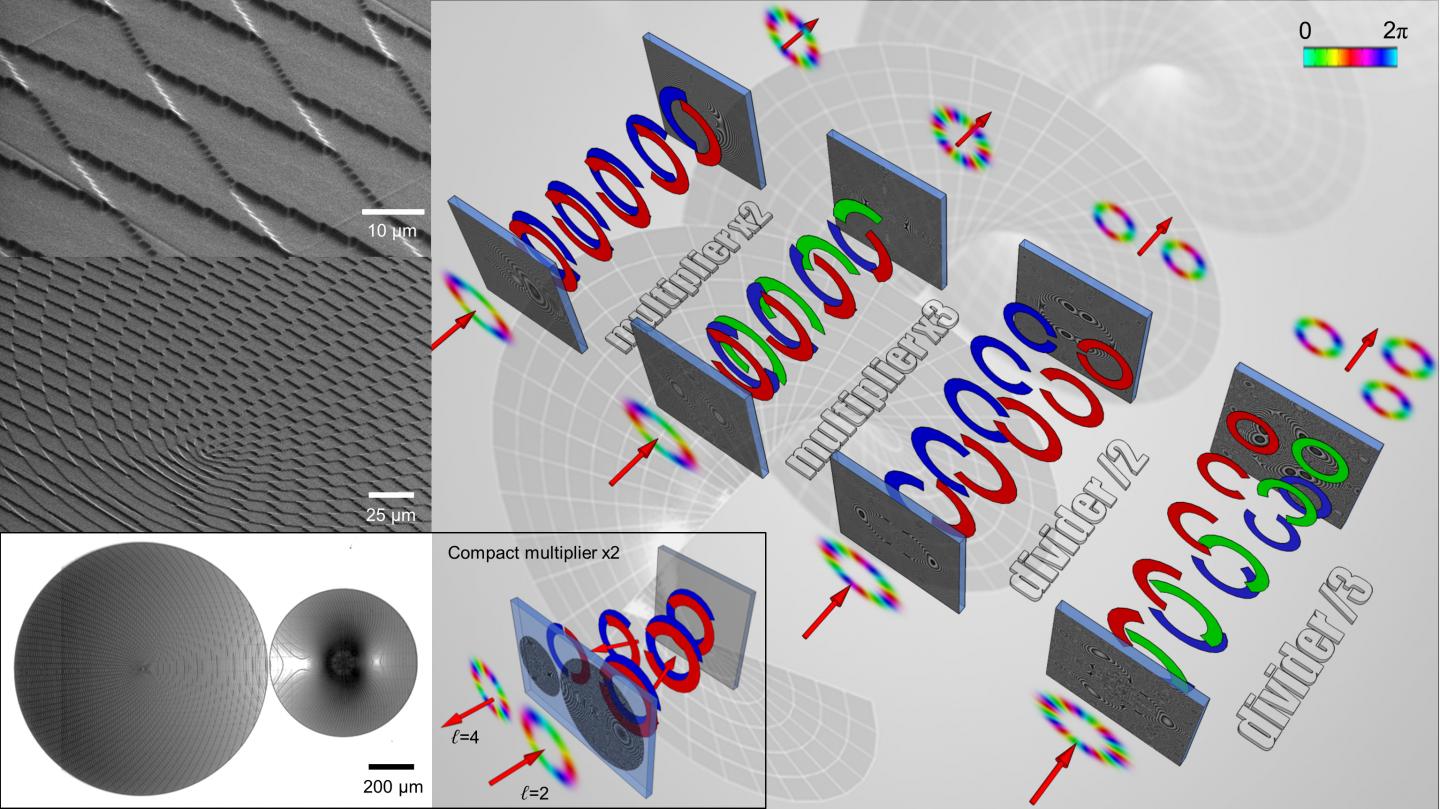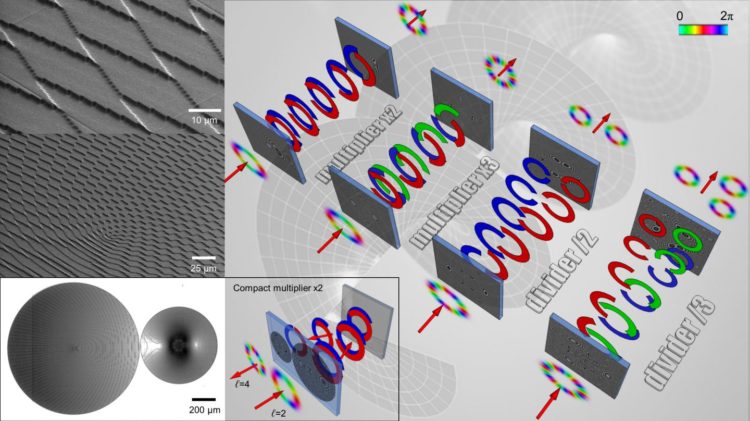
Credit: Credited by Dr. Gianluca Ruffato,Dr.Michele Massari , Prof.Filippo Romanato
Optical beams carrying orbital angular momentum (OAM) have attracted a growing attention during the last decades, exhibiting disruptive applications in a wide range of fields: particle trapping and tweezing, high-resolution microscopy, astronomical coronagraphy, high-capacity telecommunication and security.
Light beams carrying OAM are endowed with peculiar twisted wavefronts, and modes with different OAM are orthogonal to each other and can carry independent information channels at the same frequency without any interference. Then, in the telecom field, the potentially unbounded state space provided by this even-unexploited degree of freedom offers a promising solution to increase the information capacity of optical networks and solve in a sustainable way the impelling problem of frequency saturation, otherwise called as the ‘optical crunch’, this approach being valid both for free-space and optical fibre propagation.
Currently, it is urgent to further develop novel devices that can reconfigure and switch between distinct OAM modes to fully exploit the extra degree of freedom provided by the OAM both for classical and quantum communications. So far, conventional methods are useful for implementing only shift operations on the OAM, i.e., addition or subtraction.
For the first time, novel optical elements have been designed and fabricated to perform the multiplication and division of the orbital angular momentum of light in a compact and efficient way. The study has been conducted by Dr. Gianluca Ruffato, Dr. Michele Massari, and Prof. Filippo Romanato at the Department of Physics and Astronomy of Padova University, in Italy. The research results have been recently published in Light: Science and Applications.
The key element of these optics is represented by an optical transformation mapping the azimuthal phase gradient of the input OAM beam onto a circular sector. By combining multiple circular-sector transformations into a single optical element, it is possible to multiply the value of the input OAM state by splitting and mapping the phase onto complementary circular sectors. Conversely, by combining multiple inverse transformations, the division of the initial OAM value is achievable by mapping distinct complementary circular sectors of the input beam into an equal number of circular phase gradients.
The designed optical elements have been fabricated in the form of miniaturized and compact phase-only diffractive optics with high-resolution electron-beam lithography, and optically characterized in the visible range to demonstrate the expected capability to either multiply or divide the OAM of the input beam.
This study can find promising applications for the multiplicative generation of higher-order OAM modes, optical information processing based on OAM-beam transmission, and optical routing/switching in telecom, both in the classical and single-photon regimes.
###
Media Contact
Gianluca Ruffato
[email protected]
Original Source
https:/
Related Journal Article
http://dx.





